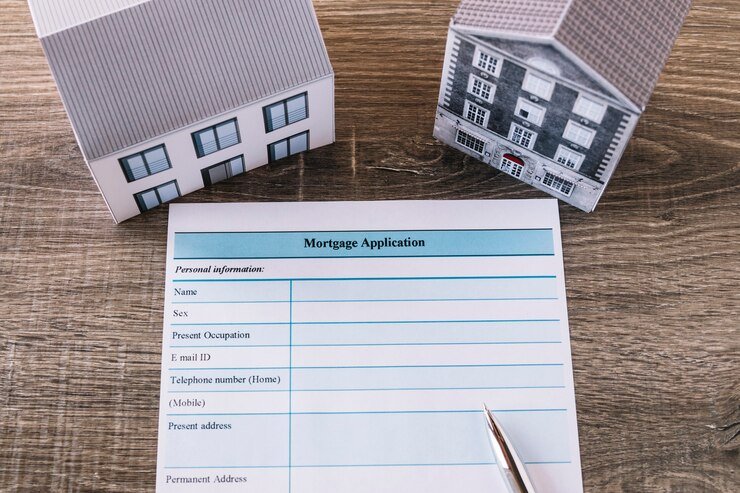Mortgage Interest : Buying a home is a significant milestone in one’s life. For most people, it involves getting a mortgage to finance the purchase. A mortgage is a loan that helps you buy a house, and it comes with an interest rate that determines how much you’ll pay over the life of the loan. Securing a stable mortgage interest rate is crucial because it can save you thousands of dollars over time. In this article, we will explore the steps you can take to secure a stable mortgage interest rate.
1. Understand Mortgage Interest Rates
Before you start the journey to secure a stable mortgage interest rate, it’s essential to understand what mortgage interest rates are and how they work. A mortgage interest rate is the percentage of the loan amount that you’ll pay to the lender as interest over the life of the loan. The interest rate can be fixed or variable.
- Fixed Rate: With a fixed-rate mortgage, your interest rate remains the same throughout the loan’s term. This means your monthly payments are predictable and won’t change over time.
- Variable Rate: A variable or adjustable-rate mortgage (ARM) has an interest rate that can change periodically. The rate is typically lower initially but can fluctuate, making your monthly payments less predictable.
2. Check Your Credit Score
Your credit score plays a significant role in determining the interest rate you’ll qualify for. Lenders use your credit score to assess your creditworthiness. A higher credit score generally leads to lower interest rates, while a lower score may result in higher rates.
To secure a stable mortgage interest rate, it’s crucial to check your credit score and take steps to improve it if necessary. Pay your bills on time, reduce your outstanding debts, and avoid opening new credit accounts shortly before applying for a mortgage.
3. Shop Around For Lenders

Not all lenders offer the same mortgage interest rates. To secure the best rate, it’s essential to shop around and compare offers from different lenders. You can approach banks, credit unions, online lenders, and mortgage brokers to explore your options.
Obtaining quotes from multiple lenders will help you identify the most competitive rates and terms available. Remember that interest rates can vary based on the lender’s policies and your financial situation.
4. Improve Your Debt-To-Income Ratio
Lenders consider your debt-to-income ratio (DTI) when determining the interest rate you qualify for. Your DTI is the percentage of your monthly income that goes toward paying debts. A lower DTI is generally more favorable to lenders.
To secure a stable mortgage interest rate, work on reducing your DTI by paying down existing debts and avoiding taking on new ones. This will improve your financial profile and increase your chances of qualifying for a lower interest rate.
5. Save For A Larger Down Payment
A larger down payment can help you secure a better mortgage interest rate. Lenders often offer lower rates to borrowers who can make a substantial down payment. Saving more money for your down payment can pay off in the form of lower monthly payments and overall interest savings.
6. Choose The Right Mortgage Term

The term of your mortgage, which is the number of years it will take to repay the loan, can also impact your interest rate. Shorter-term mortgages typically have lower interest rates than longer-term ones. However, shorter-term mortgages come with higher monthly payments.
Consider your financial goals and your ability to make larger monthly payments when choosing the right mortgage term. While a 15-year mortgage may have a lower interest rate than a 30-year one, it may not be the best option if it strains your monthly budget.
7. Lock In Your Rate
Once you’ve found a favorable mortgage interest rate, consider locking it in. Interest rates can fluctuate daily due to economic factors, so locking in your rate ensures that it remains stable until your loan closes.
Rate locks typically last for a specified period, such as 30, 45, or 60 days. Make sure to complete the necessary paperwork and meet all requirements within the specified timeframe to secure the locked-in rate.
8. Maintain Stable Employment
Lenders prefer borrowers with stable employment histories. Consistent employment demonstrates your ability to make regular mortgage payments. Avoid changing jobs or career paths shortly before applying for a mortgage, as this can raise concerns for lenders.
If you anticipate a job change, discuss your plans with your lender and explore how it might impact your mortgage application. Maintaining stable employment can help you secure a stable mortgage interest rate.
9. Consider Paying Points

Mortgage points, also known as discount points, allow you to lower your interest rate by paying an upfront fee. Each point typically costs 1% of the loan amount and can reduce your interest rate by a certain percentage, usually 0.25% to 0.50%.
Paying points can make sense if you plan to stay in your home for a long time, as the interest savings over the life of the loan can outweigh the upfront cost. However, it’s essential to calculate whether paying points is financially advantageous for your situation.
10. Monitor Interest Rate Trends
Keep an eye on interest rate trends in the housing market. Mortgage rates can fluctuate due to economic conditions, government policies, and other factors. Being aware of these changes can help you time your mortgage application to secure a stable interest rate.
You can follow financial news, use online resources, or consult with a mortgage professional to stay informed about current interest rate trends.
Conclusion
Securing a stable mortgage interest rate is a critical step in the home-buying process. It can significantly impact your monthly payments and the overall cost of your mortgage. By understanding mortgage rates, improving your financial profile, shopping around for lenders, and making informed decisions, you can increase your chances of securing a stable and favorable interest rate for your mortgage. Remember that every borrower’s situation is unique, so take the time to assess your financial goals and needs before committing to a mortgage loan.
Also Read : How To Apply For Student Loan Forgiveness?
FAQs
1. What is a mortgage interest rate?
A mortgage interest rate is the percentage of interest that a lender charges on the money you borrow to buy a home. It significantly affects your monthly mortgage payments and the overall cost of your loan.
2. Why is it important to secure a stable interest rate?
Securing a stable interest rate is crucial because it ensures predictability in your monthly mortgage payments. Fluctuating rates can lead to financial uncertainty.
3. How can I secure a stable mortgage interest rate?
You can secure a stable mortgage interest rate by shopping around for loans, maintaining a good credit score, providing a larger down payment, and choosing a fixed-rate mortgage.
4. What is the difference between a fixed-rate and adjustable-rate mortgage (ARM)?
A fixed-rate mortgage offers a stable interest rate that remains constant throughout the loan term. In contrast, an ARM starts with a fixed rate for a specific period, then adjusts periodically, potentially causing your payments to rise.
5. When should I lock in my mortgage interest rate?
You should consider locking in your interest rate when you’ve found a favorable rate, and you are comfortable with the terms of the loan. Rate locks typically last for a set period, such as 30 or 45 days.
6. What factors affect my eligibility for a stable interest rate?
Factors such as your credit score, debt-to-income ratio, down payment amount, and the lender’s policies can influence your eligibility for a stable interest rate.
Source Image : Freepik.com




